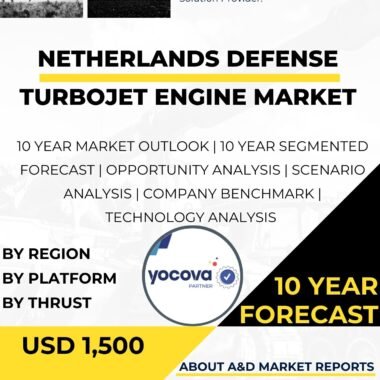Description
The defense helicopter engine market in France has been a focal point of growth and technological advancement in the aerospace industry. Helicopters are vital assets in military operations, offering versatility, mobility, and precision in various defense missions. As a nation with a rich aviation heritage and a strong commitment to defense modernization, France has been at the forefront of producing, developing, and exporting cutting-edge helicopter engines, solidifying its position as a key player in the global market.
One of the primary drivers of the defense helicopter engine market in France is the country’s recognition of the strategic importance of helicopter capabilities in modern warfare. Helicopters play a critical role in a wide range of military missions, such as reconnaissance, troop transport, search and rescue, and anti-submarine warfare. By investing in advanced helicopter engines, France seeks to enhance the performance and efficiency of its defense helicopter fleet, ensuring that its armed forces can effectively conduct operations across various terrains and combat scenarios.
The French Armed Forces prioritize the acquisition and integration of state-of-the-art helicopter engines into their rotorcraft fleet. These engines are designed to offer increased power, fuel efficiency, and reliability, enabling helicopters to carry more payloads and extend their operational range. By incorporating cutting-edge engine technologies, the French military enhances its operational flexibility and capabilities, ensuring that its helicopters can respond rapidly to emerging threats and execute a wide range of missions effectively.
Moreover, France actively collaborates with its international allies in joint military exercises, multinational defense projects, and interoperability efforts concerning helicopter engines. Interoperability is crucial for effective joint operations and coalition efforts. France’s investment in engines that are compatible with allied helicopter platforms ensures that its defense forces can seamlessly integrate with those of its allies, enhancing collective military capabilities and strengthening international partnerships in rotary-wing operations.
The aerospace and defense industry in France plays a pivotal role in shaping the defense helicopter engine market. French defense contractors, research institutions, and technology companies are renowned for their expertise in aero-engine design, propulsion systems, and materials science. The country’s helicopter engines are characterized by their cutting-edge technology, durability, and performance, making them sought after by both domestic and international customers for defense applications.
The French government’s support and investment in research and development have been instrumental in driving innovation in helicopter engine technology. Public-private partnerships, research grants, and academic collaboration have fostered the development of state-of-the-art engines in France. The government’s commitment to supporting research and innovation in defense technology ensures that French engine manufacturers remain competitive and at the forefront of developing cutting-edge rotorcraft propulsion systems to meet the evolving needs of modern warfare.
The ongoing research and development in helicopter engine technology have led to significant advancements in engine design, materials, and fuel efficiency. France is exploring new propulsion technologies, such as advanced turboshaft engines, to increase the power output and reliability of its helicopter engines. Additionally, the country is investing in technologies that reduce engine noise and infrared signatures, enhancing the stealth capabilities of its military helicopters.
Furthermore, France actively collaborates with its international partners in joint development and export programs for helicopter engines. By pooling resources and expertise, France can access cutting-edge technologies and expand its market presence in engine systems worldwide. Collaborative efforts also facilitate technology transfer and standardization among allied armed forces, making multinational defense cooperation more efficient and effective.
The defense helicopter engine market in France extends beyond the defense sector. The country’s expertise in engine technology is also utilized in civilian helicopter applications, such as medical evacuation, offshore oil and gas operations, and search and rescue missions. The reliability and performance of French helicopter engines make them valuable for various civilian industries, enhancing safety and efficiency in critical operations.
France’s regulatory framework and safety standards play a pivotal role in shaping the defense helicopter engine market. The country’s regulations ensure that helicopter engines meet strict safety and performance requirements. Additionally, France emphasizes the importance of adherence to international arms control treaties and export control measures to prevent the proliferation of sensitive defense technologies.
In conclusion, the defense helicopter engine market in France is poised for continued growth and innovation. The country’s commitment to defense modernization, research and development, and international collaborations positions it as a key player in the global market. The adoption of advanced and interoperable helicopter engines by the French Armed Forces and their diverse applications in civilian aviation demonstrate France’s leadership in rotorcraft propulsion capabilities and advanced engine technologies. As technology continues to evolve, the significance of defense helicopter engines in modern warfare and civilian helicopter operations is expected to grow, cementing France’s position as a leading innovator and supplier of engine systems worldwide.




